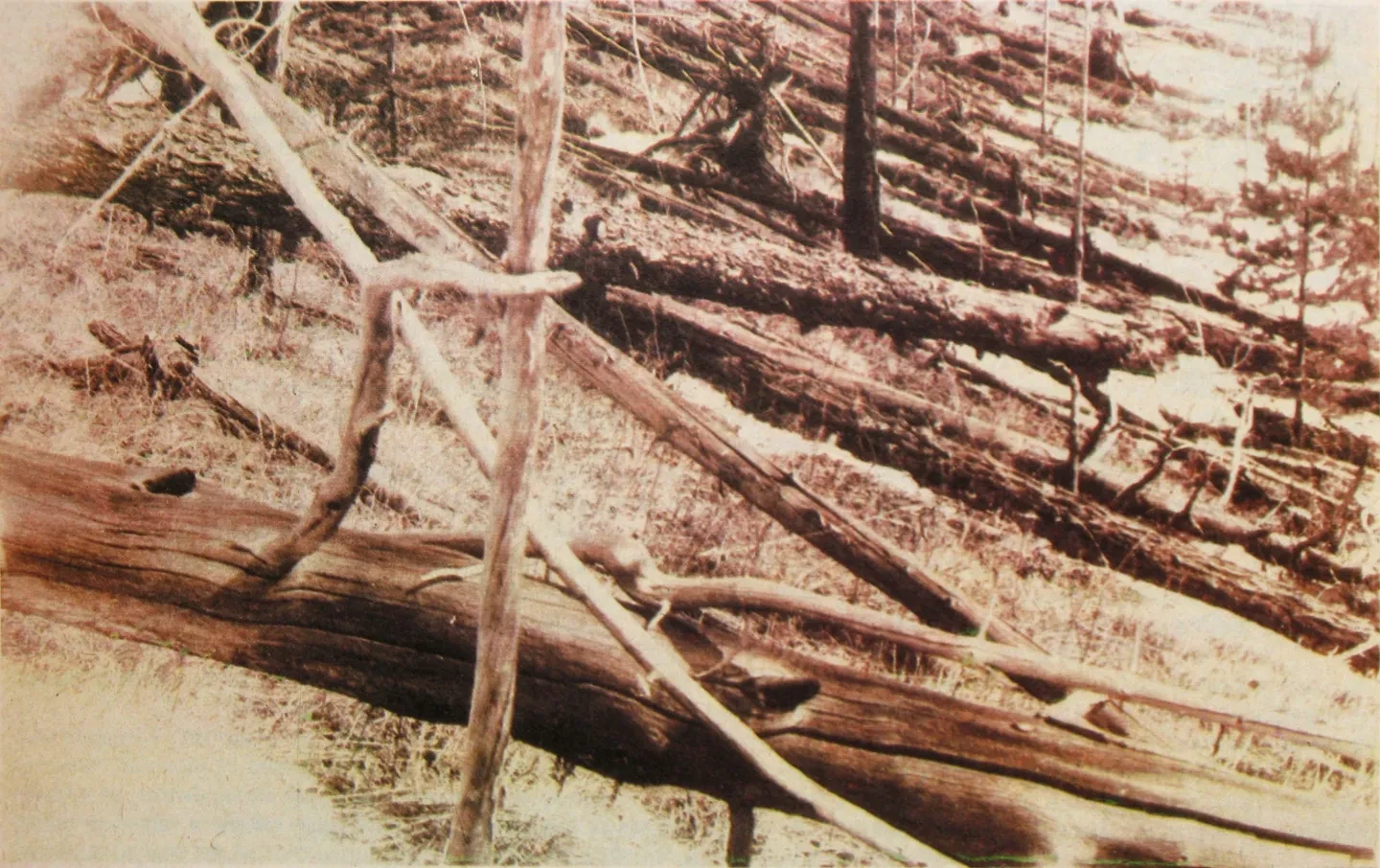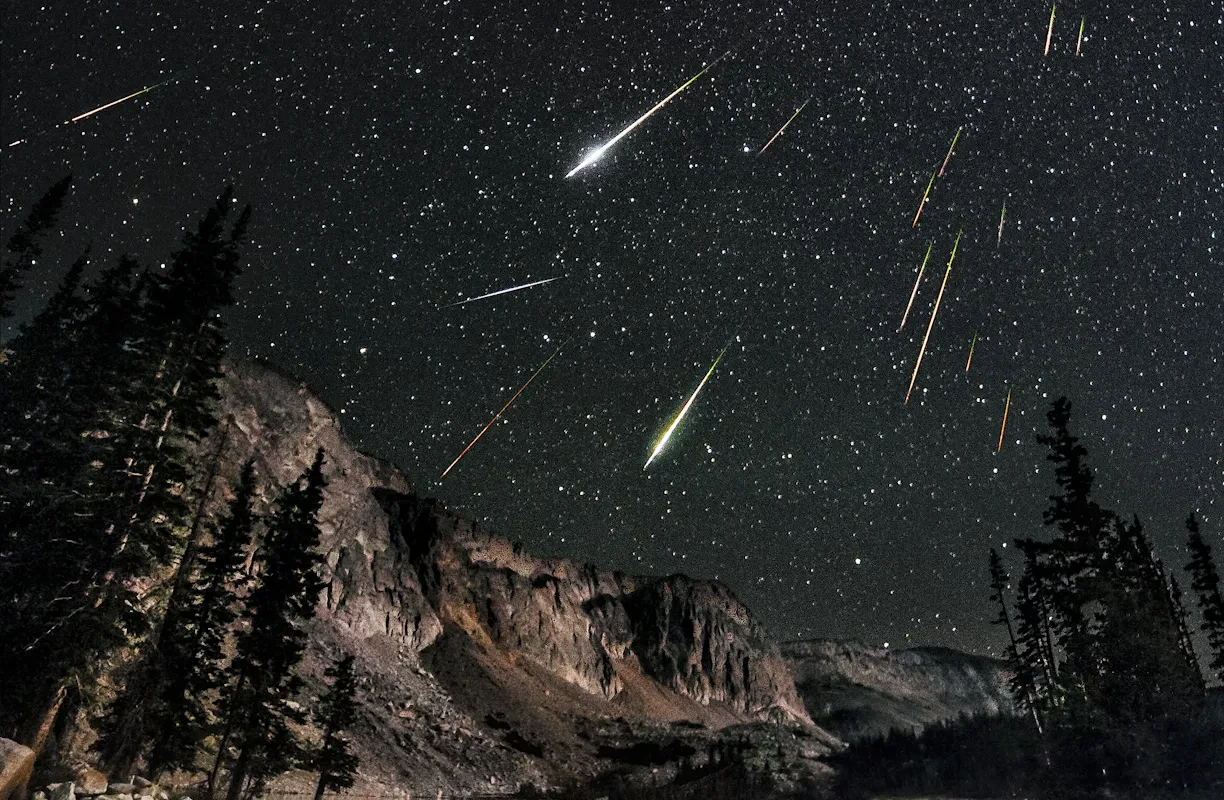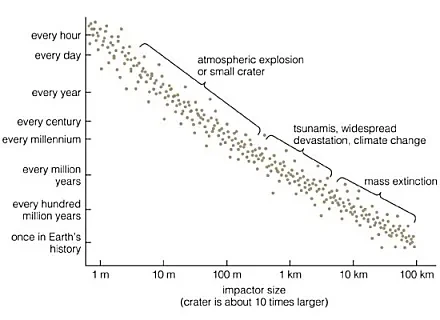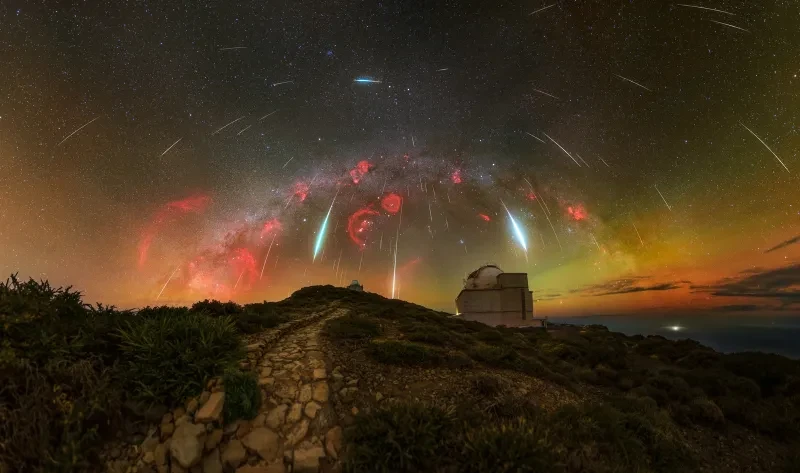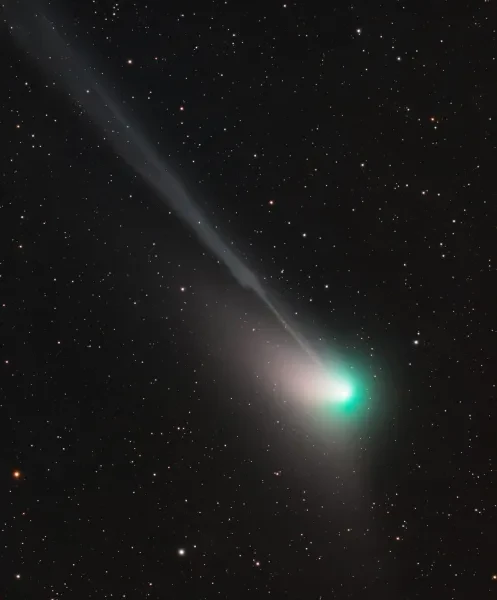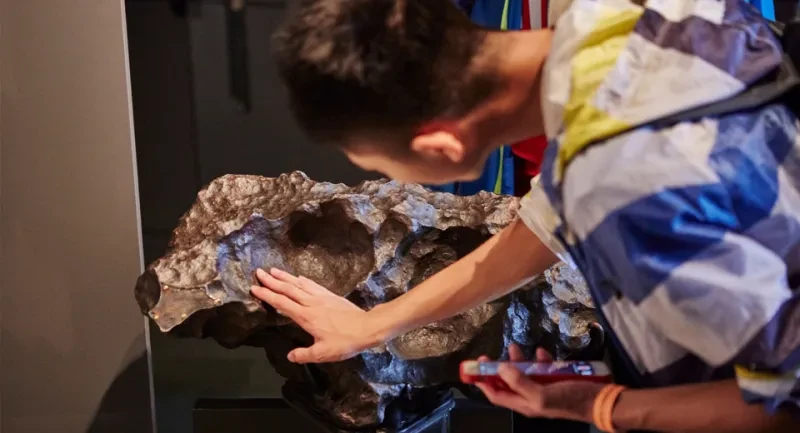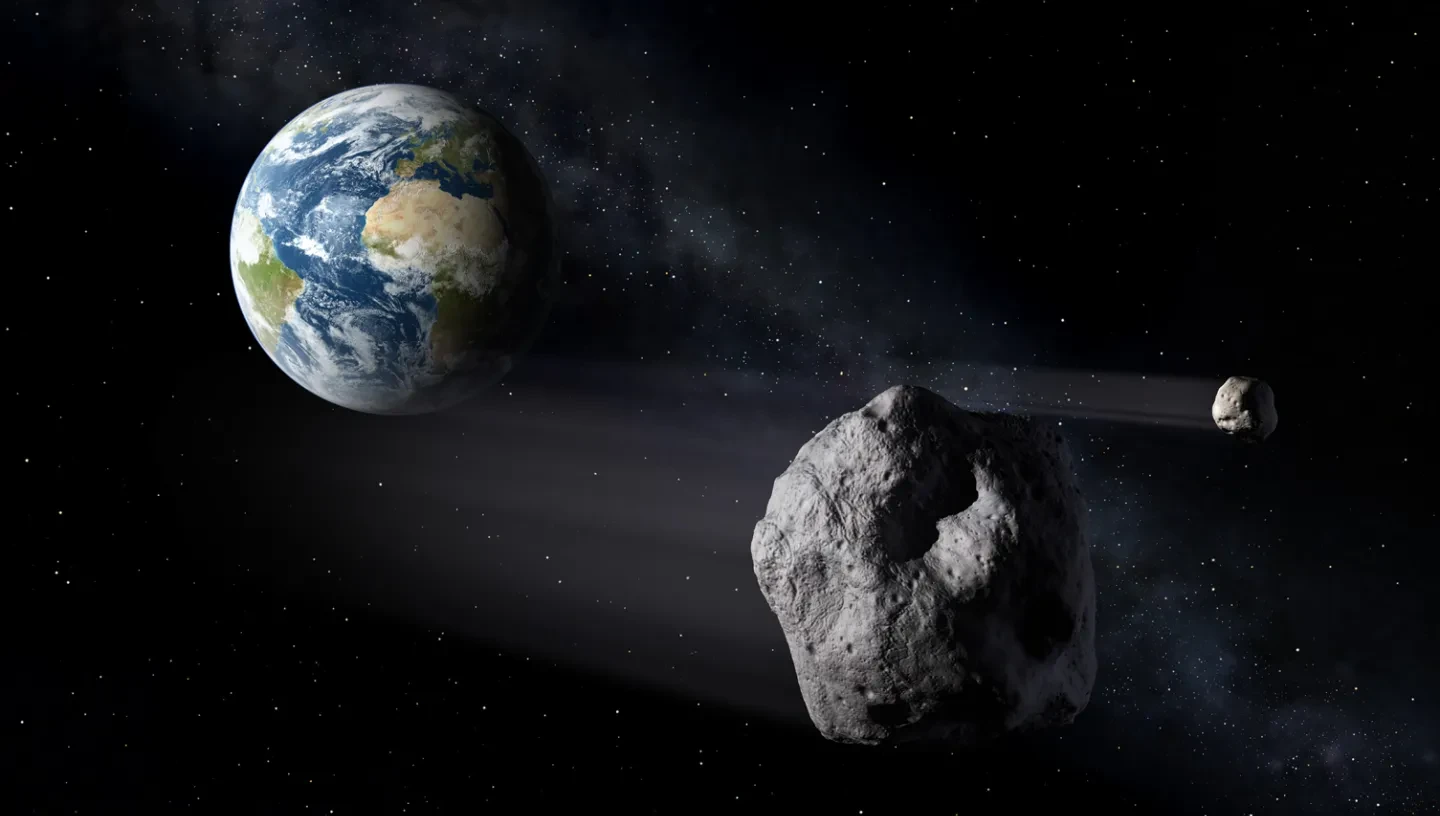
Learn more about the Tunguska event in 1908, a highly destructive asteroid explosion that occurred in a remote area of Siberia
In the 20th century, the biggest impact event in recorded human history took place. Called the 'Tunguska event', an asteroid flashing through our atmosphere on 30 June 1908 exploded with the power of 185 Hiroshima bombs over a remote area of Siberia.
After the blast, 1287 square kilometres of forest were flattened, with 80,000,000 trees felled - clearing an area larger than London. The trees fell away from the blast centre, lying in a radial position.
The impact was heard up to 1000 km away, while seismic shockwaves were even registered as far away as England.
Estimates place the 220-million-pound asteroid entering Earth's atmosphere at around 53,903 kilometres per hour and heating to 24,704 degrees Celsius before fragmenting into multiple balls of fire.
An eyewitness report gave a first-hand perspective of this extremely rare astronomical event:
...the sky split in two and fire appeared high and wide over the forest. The split in the sky grew larger, and the entire Northern side was covered with fire. At that moment I became so hot that I couldn't bear it, as if my shirt was on fire;
Then I saw a wonder: trees were falling, the branches were on fire, it became mighty bright, how can I say this, as if there was a second sun, my eyes were hurting, I even closed them.
The event was also observed from Northern Ireland, some 5,630 km away from Tunguska. The astronomer working at the Armagh Observatory that night noted a "nocturnal glow" in the log book (even though the Moon was not present), which was bright enough to read a newspaper by, even after midnight!
This photo from the Royal Museums Greenwich collection was taken in Greenwich just after the Tunguska Event, and shows the bright glow that lit up the sky.
What happened during the Tunguska event?
The most accepted explanation for the explosion is a meteor air burst from a large asteroid or meteoroid that exploded before reaching the Earth’s surface. The Tunguska event was the largest impact in recorded history, although much larger ones have occurred in prehistoric times.
When a meteoroid enters the Earth’s atmosphere, becoming a meteor, it travels at very fast speeds, which rapidly compresses the air in front of it, causing its temperature to rise. This causes it to burn up, creating a long streak along the sky, but larger ones can explode instead.
The sudden release of energy from the explosion generated a powerful shockwave that radiated outward, clearing an area of over 2,000 square km. Because the explosion happened in the air, experts believe no impact crater was created, but it is still classed as an impact event.
However, because of the remoteness of the region where it occurred and the limited instrumentation available at the time of the event, many other scientific interpretations have been suggested.
One of these theories was suggested in 1930, and believes that the object was actually a small comet, possibly a fragment of the comet Encke, rather than a meteorite or an asteroid. Comets are made mainly of ice and dust, which vaporise easily at high temperatures, which explains why there was no impact crater.
This is also supported by the glowing skies seen at the time which could be from dust and ice dispersed by the comet into the atmosphere. The event coincided with the peak of the Beta Taurida meteor shower (debris from a comet), which supports this theory.
However, we'll possibly never know for sure exactly what happened that night.
Could something like the Tunguska event happen again?
Fortunately, a Tunguska-type event is only expected to occur, on average, once every century. And a meteor crater-type impact is only expected once in a million years.
However, it is very difficult to estimate exactly how frequently such events could occur. If you were to ask an astronomer in 1993 what the chance was of a large comet hitting Jupiter, they would have said maybe once every 100 million years... but just a year later, Comet Shoemaker-Levy 9 hit Jupiter.
And astronomers are discovering new Near-Earth Objects (asteroids with orbits that come relatively close to Earth) all the time, as the graph below shows.
It's important not to underestimate the threat of asteroids hitting Earth. If the Tunguska impact had been centred on London, it would have destroyed everything within the M25 and killed millions. Meanwhile, if it had hit anywhere else in the UK, it would have still killed tens of thousands.
But the real risk is possibly from the small, more frequent asteroids. We expect a 10m meteoroid to hit every year, causing a 100m crater. Maybe only one in ten would hit a populated area - but considering the average density of England, that once-a-decade strike could still kill 12 people.
It therefore makes sense that research is done in order to understand more about - and attempt to eliminate - the threat posed by asteroid strikes.
The Tunguska event's legacy
International Asteroid Day is celebrated every 30 June, the anniversary of the Tunguska event, in order to raise awareness about the importance of tracking and studying asteroids.

